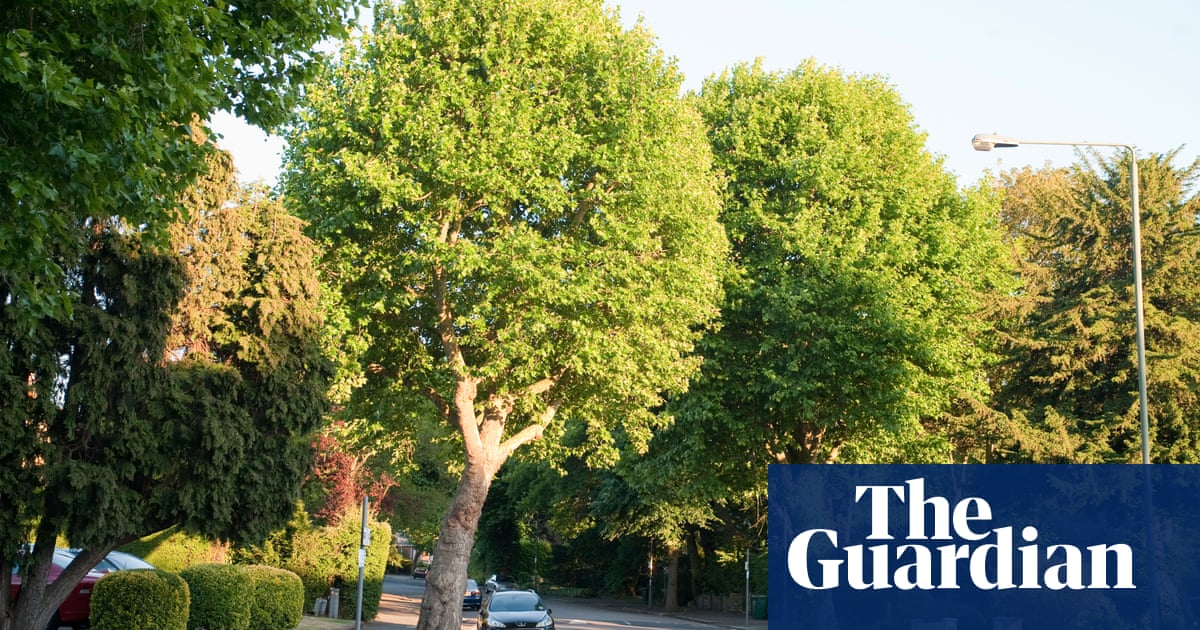
Nearly half of English neighbourhoods have less than 10% tree cover, with lower-income areas having far fewer trees than wealthier ones, analysis has found.
England’s tree cover is just 12.8%, according to the research by Friends of the Earth, with only 10% made up by woodland – paling in comparison with the EU, where woodland cover stands at 38%.
The government aims to increase tree cover to 16.5% by 2050 under plans to reach net zero and protect biodiversity, but campaigners say this is not sufficient, calling for tree numbers to be doubled.
The analysis, carried out on behalf of Friends of the Earth by mapping experts Terra Sulis, has for the first time identified lone trees and street trees in England using laser imaging, bolstering previous research that accounted only for trees in woodlands and those clustered in smaller groups.
It found that 43% of neighbourhoods in England have less than 10% tree canopy cover, while 84% have less than 20% coverage.
Some areas have far less tree cover than others, the research found. For example, South Holland in Lincolnshire has been found to have the lowest tree cover in the country at only 2.2%, while Surrey Heath in Surrey ranks highest with 36.1%. Wealthier areas were better off; neighbourhoods that rank lowest on the Index of Multiple Deprivation – a measure that evaluates social disadvantage in the UK – have far fewer trees than the wealthiest neighbourhoods.
Mike Childs, the head of science, policy and research at Friends of the Earth, said: “The UK government should be aiming to double tree cover in England by 2050 to ensure that people, no matter where they live or what their income, can experience the mental and physical health benefits that trees bring. Our new mapping identifies the areas that are missing out most on these life-enhancing protections, and where new tree planting should be prioritised.”
Childs reiterated that the government’s tree-planting targets were far below European averages, and would leave the country behind by 2050.
He said: “Current targets for tree planting are woefully inadequate and overlook the devastating impact that timber and wood imports from countries such as Brazil, China and Russia wreak on nature globally.
“We need many more trees for farming, urban cooling and absorbing harmful carbon emissions. There’s more than enough viable land to increase cover twofold without compromising quality agricultural land or protected habitats. The government must get behind a far more ambitious plan to boost tree numbers and adopt this as an official target.”
Friends of the Earth said trees were not just important as carbon sinks to reach net zero, but they also had crucial benefits for humans, particularly in urban areas. They provide cooling in cities when water evaporates from their leaves, for example.
The analysis found that there were 3,790 neighbourhoods in England with less than 5% tree cover – more than four-fifths of these are in urban areas where extreme heat is most problematic. Having more trees in your local area is also beneficial for health and wellbeing, Public Health England has said.
A spokesperson for the Department for Environment Food and Rural Affairs said increasing tree cover across England was part of the government’s plan to tackle the effects of climate change and the biodiversity crisis.
“This government has committed to a five-fold increase in average tree planting rates, which will boost the numbers of trees close to where people live and in some of the most nature-deprived parts of the country.”
The spokesperson said money from the £650m Nature for Climate fund was being given to other funds focused on woodland, such as the Urban Tree Challenge fund which helps to pay for the planting of trees in urban areas.












